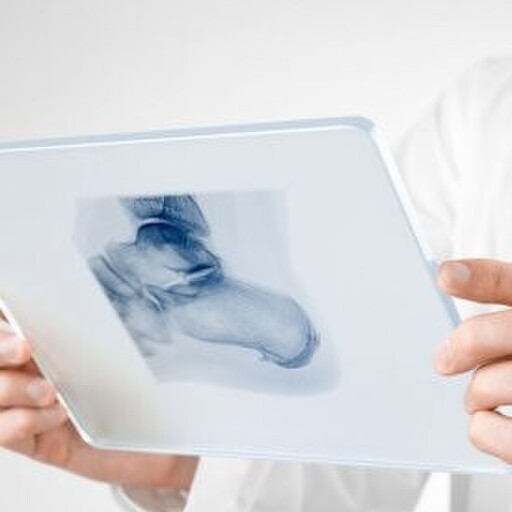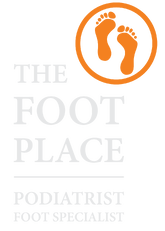Signs & Symptoms
It is common for patients with heel pain, often called plantar fasciitis, to have heel spurs. However heel spurs are most often an incidental finding and do not correlate with the patient's symptoms.
“While evaluating a patient’s X-ray for a different type of problem, you can often notice a heel spur. After questioning, the patient will often explain the spur, or their heel, has never caused them pain”.
Heel pain, or plantar fasciitis, can cause after rest pain. After rest pain produces a severe stone bruise type pain at the bottom of the heel when you go to get up after rest, watch TV to make cup of tea or first thing in the morning.
Rarely, heel spurs can cause a sharp, intense type pain at the bottom of the heel that worsens with activity and alleviated by rest. This may be caused by a bony bump at the bottom of the heel, growing downwards, towards the ground. This can be caused by a type of heel spur referred to generally as a plantar exostosis.
Causes
There are numerous reasons for spurs or bumps to form on the heel. .
The commonly occurring heel spur is caused by abnormal tension stress, tightness (traction) at the bottom of the foot. This can cause the tight connective tissue that anchors to the heel to tear away, resulting in localised inflammation and pain. Heel spurs are formed during inflammation when bony/cartilaginous deposits are laid in to the damaged anchor points; the body’s way of repairing and strengthening the area.
This is a process that can take place over several months and can be caused by strains and stretching on the muscles and ligaments surrounding the foot.
Changes in life, and work, increased weight, trauma and hormonal changes have also been statistically associated with the formation of heel spurs.
Other types of spurs, lumps and bumps can be caused by, but not limited to:
Foot shape, high arch (rigid) or low arch height (flexible)
Long hours of standing or walking on hard flat surfaces
Footwear that is poorly fitting or unsuitable
Haglund's deformity
Loss the the heel's fibro fatty padding (Kager's pad)
Prolonged use of steroidal anti-inflammatory medication
Trauma, accidental, eg Pott's fracture, and surgical
Bone tumour, non-cancerous and malignant
Inflammatory disease, eg gout, rheumatoid arthritis, Marie Tooth Charcot disease, Giant Dell Tumour (GCT)
Gastrocnemius Equinus - Haglund's deformity
Calcium deficiency
Peripheral Vascular Disease (PVD) - smoking
Chronic Obstructive Pulmonary Disease (COPD) - smoking
Diagnosis
There are many types of heel spurs.
In some cases, large heel spurs, e.g. Haglund’s deformity that occurs at the back of the heel and includes the Achilles tendon’s heel attachment, can be clearly felt under the skin as it’s located where there is reduced fibro-fatty padding overlying the bone growth. In other cases where pain occurs during walking, the heel spur may face downwards, towards to ground. X-Ray investigation can be useful to help confirm the spurs shape and position.
If an X-ray is inconclusive, other investigations include, but are not limited, to an MRI, bloods tests (haematological investigations)
Treatment
The successful treatment or management of a heel spur depends entirely up on an accurate diagnosis. We need to know what type of heel spur you have before we are able to demine how we treat it.
Once a sound diagnosis has been made, treatment can include but is not limited to:
Change of footwear
Prescription orthotics designed to off load the painful area and reduce the abnormal stress with the foot.
Simple insoles design to offload the painful area
Focal Extracorporeal Shock Wave Therapy (EWST)
Modification to activity levels
Targeted regime of stretching exercises
GP or specialist referral to alter medication
Change in diet, reduced processed food, avoidance of sugar and alcohol, eating whole foods and drinking water
Sleeping well
Stopping smoking or vaping
Prevention
It is generally accepted that functional, well-fitting footwear and regular exercise that includes an effective stretching regime of the lower limb, can all contribute to avoiding the formation of heel spurs. However, we do see them in the fittest of individuals who wear appropriate footwear.
The reduction of excessive body weight by eating a healthy well balanced diet that includes whole foods, drinking water and avoiding processed foods, sugar and alcohol also help to reduce the physical stress on your feet and improve their physiological ability to function normally. Avoiding smoking and vaping also helps the tissues in your feet to live and function normally, avoiding the negative changes that can cause heel spurs.
Prevention is better than cure, if you have any questions please contact our rooms and we will do our best to help.

